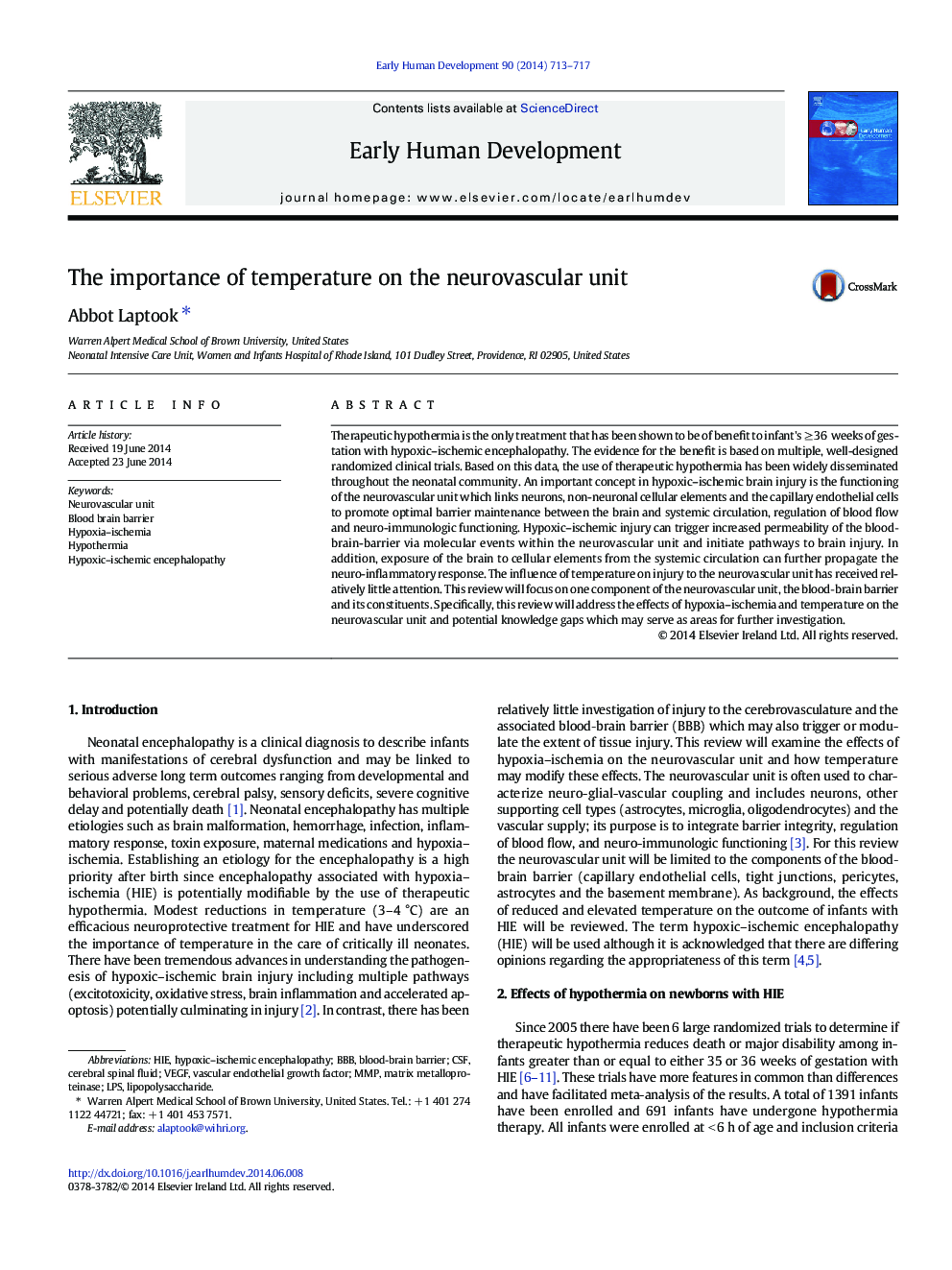| Article ID | Journal | Published Year | Pages | File Type |
|---|---|---|---|---|
| 3916655 | Early Human Development | 2014 | 5 Pages |
Therapeutic hypothermia is the only treatment that has been shown to be of benefit to infant's ≥ 36 weeks of gestation with hypoxic–ischemic encephalopathy. The evidence for the benefit is based on multiple, well-designed randomized clinical trials. Based on this data, the use of therapeutic hypothermia has been widely disseminated throughout the neonatal community. An important concept in hypoxic–ischemic brain injury is the functioning of the neurovascular unit which links neurons, non-neuronal cellular elements and the capillary endothelial cells to promote optimal barrier maintenance between the brain and systemic circulation, regulation of blood flow and neuro-immunologic functioning. Hypoxic–ischemic injury can trigger increased permeability of the blood‐brain-barrier via molecular events within the neurovascular unit and initiate pathways to brain injury. In addition, exposure of the brain to cellular elements from the systemic circulation can further propagate the neuro-inflammatory response. The influence of temperature on injury to the neurovascular unit has received relatively little attention. This review will focus on one component of the neurovascular unit, the blood‐brain barrier and its constituents. Specifically, this review will address the effects of hypoxia–ischemia and temperature on the neurovascular unit and potential knowledge gaps which may serve as areas for further investigation.
